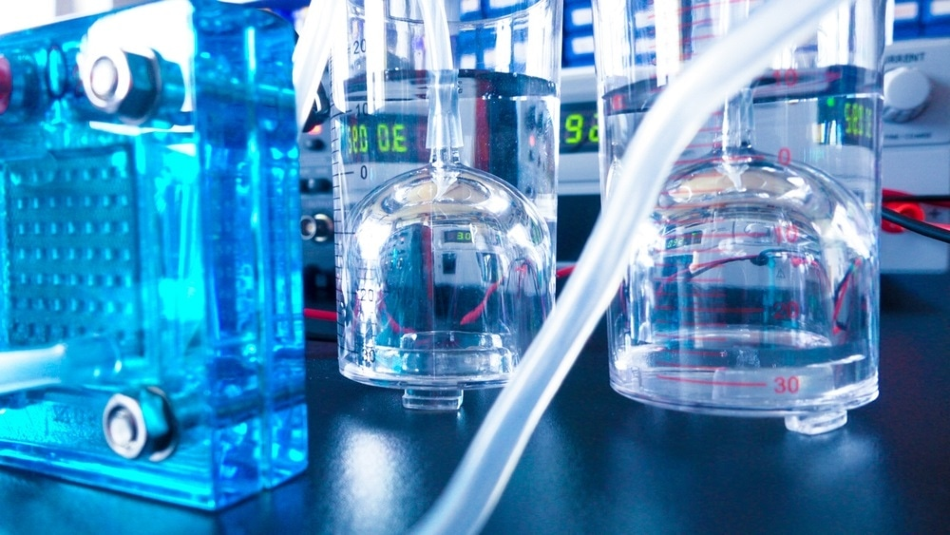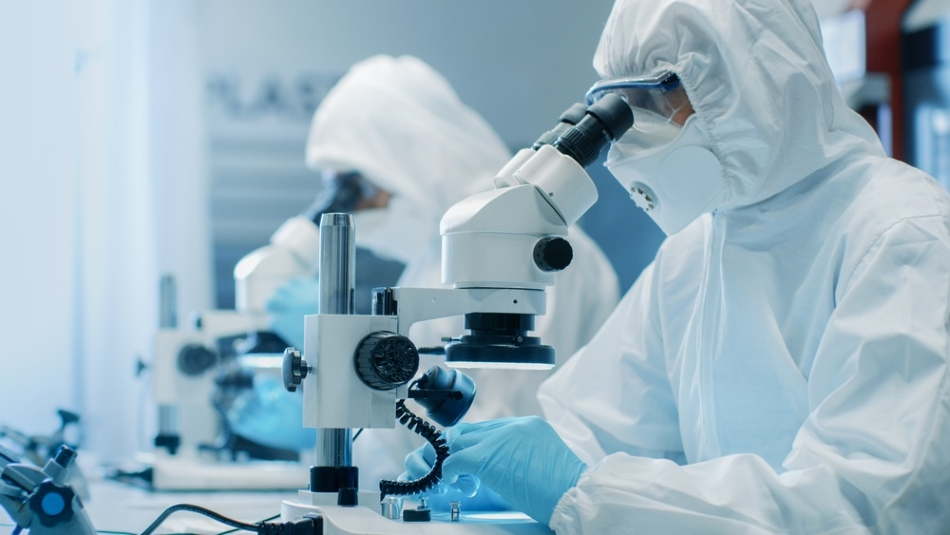An interview with Shelley Minteer, Professor of Chemistry at the University of Utah, discussing how sustainable and economical cascade-based electrocatalysis could lead to a brighter future across research and industry.
How are electrocatalysts used in research and industry?
Electrocatalysts are abundant across the industry. People use electrocatalysts for water splitting. So, producing hydrogen and oxygen in fuel cells for electric vehicles, as well as a variety of different industrial processes, like the chloralkali process to produce chlorine gas, as well as other electric chemical processes.

Credits: science photo / Shutterstock.com
Most of the electrocatalytic systems that have been developed over the past two decades have been single electrocatalysts. Why is this?
When thinking about developing a catalyst, it is usually easier to initially develop a catalyst that does a single transformation. So, this could be a one-electron, two-electron or maybe a four-electron process, but essentially it is a small step to the overall process.
As we begin to think about doing more complex transformations, it becomes more complicated. This is because we now need more than one catalyst to be on our electrode surface and we need to design the materials so that we can have those multiple catalysts.
Why do scientists want to develop alternatives to single electrocatalysts?
The single electrocatalysts are very good at doing a single electron, two-electron, or even four-electron transformations. That is somewhat limiting because that allows you to make things like hydrogen from protons or chlorine gas from chloride ions, but it does not allow you to do complex transformations that require maybe 10, 12 or even 15 electrons to do the complete process.
What are enzymatic bioelectrocatalysts and how can they be used to overcome the issues with single electrocatalysts?
Most biocatalysts are for redox reactions, so catalyzing redox reactions that you would think of from an electric chemical perspective, are oxidoreductase enzymes. So they are enzymes that can catalyze a variety of redox reactions. Interestingly, there are thousands of these different oxidoreductase enzymes in living cells. So living cells basically give us the model by which we can think about doing very complex redox chemistry.
If you think about food, take a normal lunch, you are going to have some sugars, a little bit of carbohydrates, a little bit of fat, a little bit of oil, a little bit of protein, and your body essentially has oxidoreductase enzymes within it to catalyze the oxidation of all of those complex molecules.
These are all fuel so that you can do the energy conversion that you need for your everyday life. And so, we are using biology as the inspiration to do interesting chemistry, because biology gives us such a wide variety of chemistry applications.
How are these catalysts developed and how do you mediate electron transfer?
These catalysts from an initial generation perspective are naturally occurring. They are isolated and purified from their natural sources, so from microorganisms. Then, as we end up with catalysts that we are interested in using electrochemically, we will do enzyme engineering on them to make them more appropriate for electrochemical applications versus in vivo applications.
In one study, you made the sustainable biosynthesis of polyhydroxybutyrate economical. Please can you tell us about this research?
One of the things that we are really interested in is whether or not we can use electrocatalysis to more sustainably produce products. Plastics are obviously a product that we are interested in producing, especially sustainable polymers.
We developed a system where we took microorganisms that could produce plastics and we removed the part of the microorganism that was responsible for that chemistry and immobilized it on electrode surfaces to be able to electric chemically generate plastics.
In another study, you focused on selectively producing chiral amines using bioelectrocatalysis. How did you achieve this?
As we got more interested in sort of sustainable chemistry and using electric chemistry as a tool to produce products, we started realizing that there are several products that the pharmaceutical industry are interested in. One of those are chiral amines. If you look at drugs, a lot of pharmaceuticals are chiral amines themselves. So, we were interested in whether or not we could design and use a series of enzymes to be able to make these drug candidates and drug intermediates.

Image Credits: Gorodenkoff / Shutterstock.com
Why did you choose to present this research at Pittcon?
I've been coming to Pittcon for 20 years and Pittcon is the place to present your new work. This is a new research area in my lab, from the last year and a half, and so it was a great opportunity to show the community the new work that is happening in our research lab.
What does the future hold for enzymatic cascades and your research?
I think the future is going to focus on safer and cleaner ways to produce chemicals, whether those are pharmaceuticals or commodity chemicals or fine chemicals. We are going to have to as a country or as the world focus on greener, safer, more sustainable production processes. And this gives us a great opportunity to use electric chemistry to essentially use renewable energy to produce molecules more safely but and in a greener way.
Why do you think events like Pittcon are important for the analytical chemistry / scientific industry?
Pittcon is first and foremost a trade show. It is a great opportunity to come every year and see what new instrumentation is being developed, and what new equipment is out there in analytical chemistry and the analytical sciences.
It is a great opportunity to see the latest and greatest in terms of technology. However, it is also an opportunity to see where the field is going at the talks. The talks are usually presenting things which are going to take several years to become commercial products on the exhibition floor, but it gives you a chance to see where the science is going so that you can make better choices in terms of where your research is going to focus.
About Pittcon
 Pittcon® is a registered trademark of The Pittsburgh Conference on Analytical Chemistry and Applied Spectroscopy, a Pennsylvania non-profit organization. Co-sponsored by the Spectroscopy Society of Pittsburgh and the Society for Analytical Chemists of Pittsburgh, Pittcon is the premier annual conference and exposition on laboratory science.
Pittcon® is a registered trademark of The Pittsburgh Conference on Analytical Chemistry and Applied Spectroscopy, a Pennsylvania non-profit organization. Co-sponsored by the Spectroscopy Society of Pittsburgh and the Society for Analytical Chemists of Pittsburgh, Pittcon is the premier annual conference and exposition on laboratory science.
Proceeds from Pittcon fund science education and outreach at all levels, kindergarten through adult. Pittcon donates more than a million dollars a year to provide financial and administrative support for various science outreach activities including science equipment grants, research grants, scholarships and internships for students, awards to teachers and professors, and grants to public science centers, libraries and museums.
What Pittcon Can do for You
What Pittcon Can do for You from AZoNetwork on Vimeo.
About Shelley D. Minteer
The Minteer Group focuses on improving the abiotic-biotic interface between biocatalysts and electrode surfaces for enhanced bioelectrocatalysis. These biocatalysts include microbial cells, organelles (mitochondria and thylakoid membranes), redox proteins, and oxidoreductase enzymes.
 We design electrode structures for enhanced flux at electrode surfaces for biosensor and biofuel cell applications. The group utilizes a variety of electroanalytical techniques (linear polarization, cyclic voltammetry, differential pulse voltammetry, differential pulse amperometry), as well as a variety of biological and spectroscopic techniques to accomplish these goals. The group also has an active program in electrocatalysis for synthetic organic electrochemistry.
We design electrode structures for enhanced flux at electrode surfaces for biosensor and biofuel cell applications. The group utilizes a variety of electroanalytical techniques (linear polarization, cyclic voltammetry, differential pulse voltammetry, differential pulse amperometry), as well as a variety of biological and spectroscopic techniques to accomplish these goals. The group also has an active program in electrocatalysis for synthetic organic electrochemistry.
Disclaimer: The views expressed here are those of the interviewee and do not necessarily represent the views of AZoM.com Limited (T/A) AZoNetwork, the owner and operator of this website. This disclaimer forms part of the Terms and Conditions of use of this website.